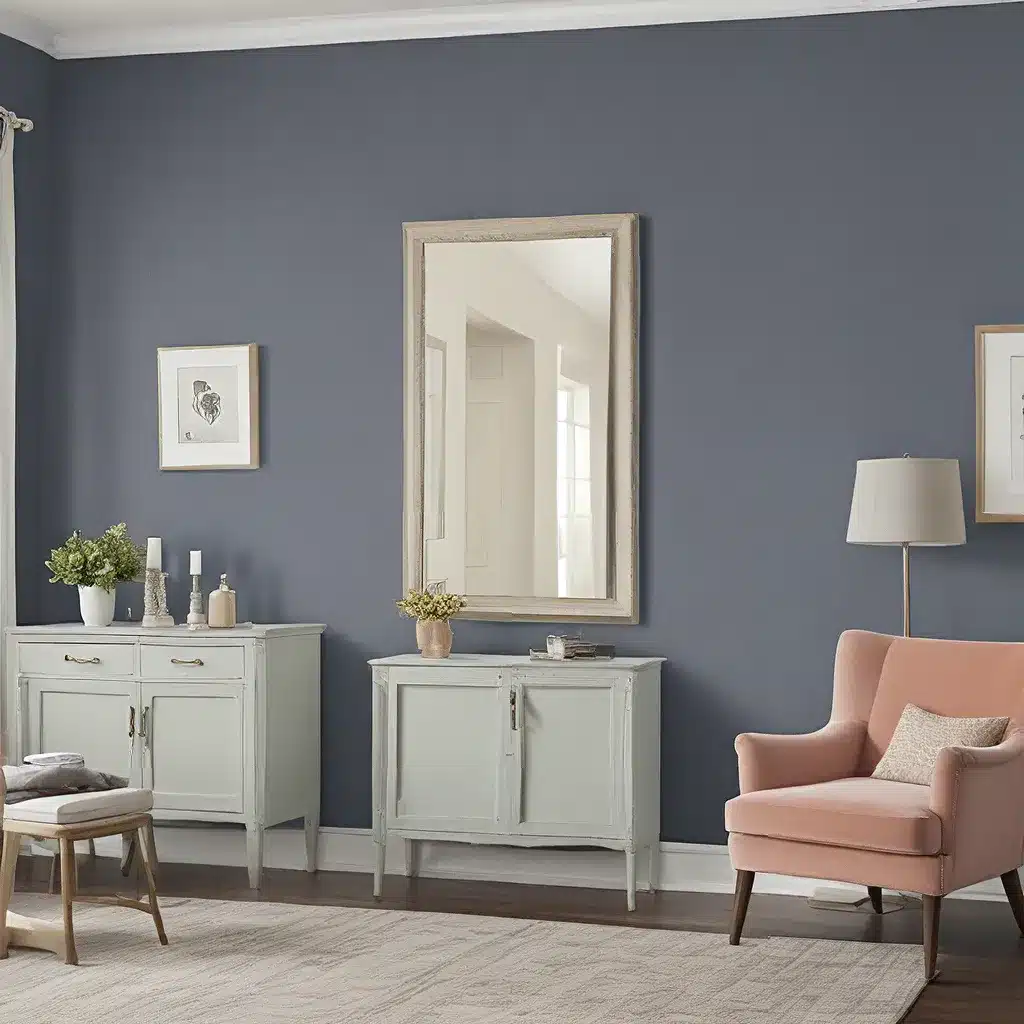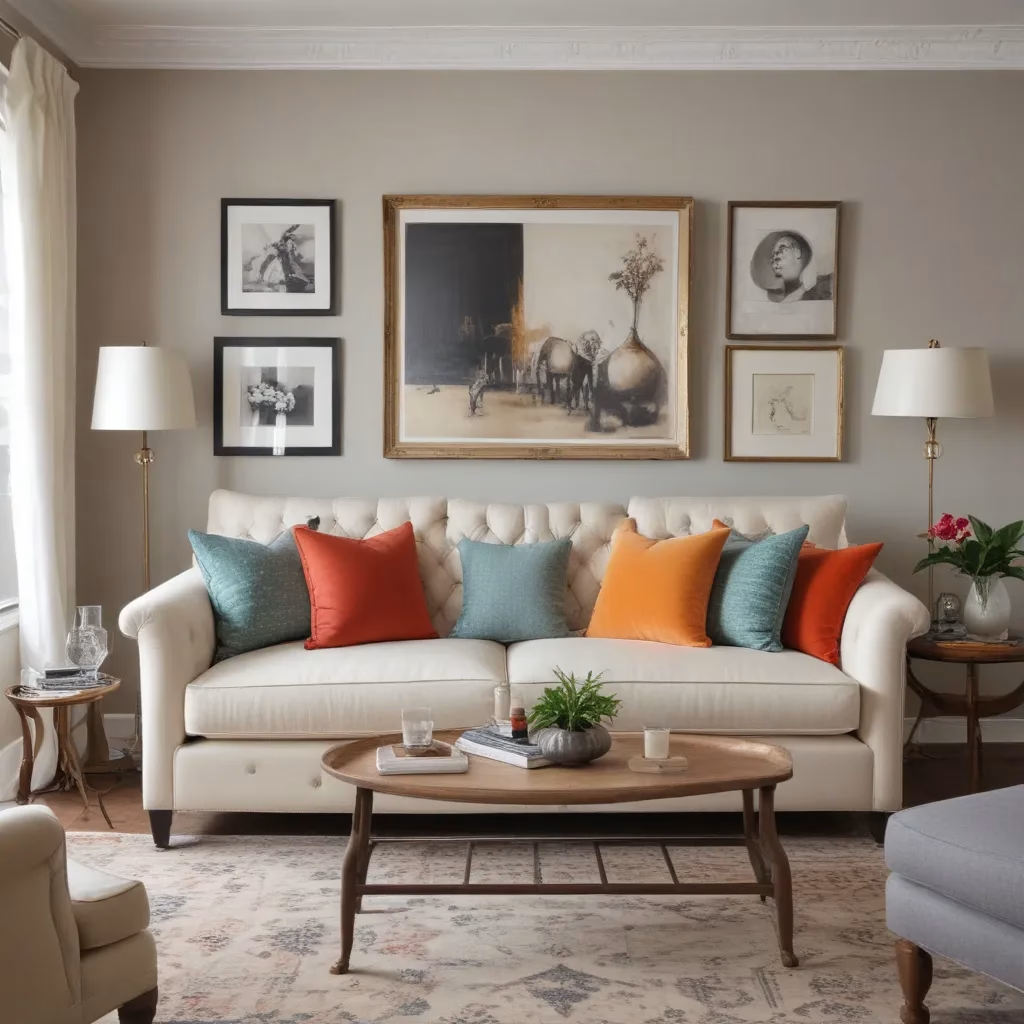
The Agony of Choosing Paint Colors (And How to End It)
As a self-proclaimed interiors enthusiast, I’ve lost count of the number of times I’ve stood in front of a wall full of paint swatches, staring blankly and feeling completely overwhelmed. Choosing the perfect paint colors for your home is no easy feat – there are just so many options! And it’s not just about picking a color you like. You have to consider things like lighting, undertones, and how the colors will flow throughout your space.
It’s enough to make your head spin. But I’m here to tell you that it doesn’t have to be so agonizing. With a little know-how and the right approach, you can confidently select paint colors that transform your rooms and make your home look like it was decorated by a pro (even if you did it all yourself).
Start with Inspiration
The first step in choosing the perfect paint colors is to gather some inspiration. This can come from all sorts of places – interior design magazines, Pinterest, your favorite home decor stores, or even just taking a walk outside and observing the beautiful colors in nature.
As home decor expert Sue Wadden from Sherwin-Williams says, “The easiest way to start the color selection process is by gathering inspiration from external sources. Homeowners can find inspiration from other homes, Pinterest, magazines, or even nature and the world around them. This will help you decide what aesthetics you naturally gravitate towards instead of just choosing a color that’s trending.”
For example, maybe you’re drawn to cozy, earthy tones like deep greens and warm browns. Or perhaps you love the crisp, airy feel of light blues and whites. Identifying the vibe you want to create is key.
Consider Your Existing Elements
Once you’ve got a sense of the overall aesthetic you’re going for, the next step is to look at the existing elements in your home that you want to work with. Things like large furniture pieces, area rugs, backsplash tile, or even the color of your kitchen countertops can all serve as a jumping-off point for your paint color palette.
As the experts at Sherwin-Williams suggest, “If you’re starting with a fully furnished home, think of a favorite rug, piece of art, or fabric in your space. Often these objects are your favorites because they feature colors you like. Use these combinations as a guide to choosing shades for your walls.”
For example, in our kitchen, we used our existing green-toned countertops as inspiration to choose a rich, jewel-toned green for our lower cabinets. By anchoring our paint color to an existing element, we were able to create a cohesive and intentional look.
Understand Undertones
One of the trickiest parts of choosing paint colors is accounting for undertones. Even if two paint swatches look similar at first glance, they can have very different undertones that drastically affect how the color appears on your walls.
As the experts at Blesser House explain, “Never trust a paint color swatch at the store having only glanced at it for 5 minutes. It’s full of lies. Paint colors in the store will look different than they will in your room because of lighting and undertones.”
The best way to spot undertones is to look at the paint swatches in natural daylight, away from any artificial lighting. Put the swatches on a clean, white surface and examine them closely. Are they more warm (with hints of yellow, orange, or red) or cool (with hints of blue, green, or violet)? Knowing the undertones will help you choose colors that complement each other and create the cohesive look you’re going for.
Test, Test, Test
Once you’ve narrowed down your paint color options, it’s time to put them to the test. Don’t just rely on those tiny little swatches – get sample pots and paint large sections on your walls to see how the colors look in your specific space.
As the experts at Martha Stewart recommend, “For an easy way to unify hues from room to room, choose various shades from a common color palette. Check out the latest Colormix Forecast for designer-curated palettes perfectly coordinated so you can mix and match with confidence.”
Spend some time with the sample colors, observing how they change throughout the day as the lighting shifts. This will give you a much better sense of how the colors will look in the final application. And don’t be afraid to try out a few different options – it’s better to spend a little extra time upfront than to end up with a color you’re not thrilled about.
Consider the Mood and Function
When choosing paint colors, it’s not just about what’s visually appealing. You also have to think about the mood and function you want to create in each space.
As the team at Blesser House points out, “Color theory can influence our emotions, mood, and behavior. Before diving into paint color choices, decide first how you want to feel when you walk into a room and think about what colors will create that feeling for you.”
For example, you might want your bedroom to feel calming and cozy, so soft blues or greens would be a great choice. Meanwhile, your kitchen might call for something more vibrant and energizing, like a sunny yellow or rich red.
And don’t forget about how the size and layout of a room can impact color choices. Lighter, airier colors can make a small space feel more open, while deeper hues can create a cozy, intimate vibe in a large room.
Put it All Together
Once you’ve gone through all these steps, you should have a pretty good idea of the paint colors that will work best in your home. But before you break out the rollers and brushes, take one more look at how the colors will flow together.
Try to stick to a cohesive color palette, using no more than 2-3 main colors throughout your space. As the Blesser House team advises, “You can use more than one color in a room, but try to keep it to three colors maximum. If you want to have bold colors, keep it to two and make the third color a neutral to keep the room from feeling overwhelming.”
And don’t be afraid to get creative with how you apply those colors. Consider doing an accent wall in a bold hue, or painting your trim and doors a contrasting color. These little touches can really elevate the overall look and make your home feel truly custom.
The Beauty of Imperfection
The most important thing to remember is that there’s no such thing as a “perfect” paint color. No matter how much research and testing you do, the final result might not look exactly like you envisioned. And that’s okay! In fact, it’s part of the beauty of DIY home projects.
As my dear friend Olivia always says, “Paint isn’t permanent, and even though it can be frustrating, paint can always be changed if you decide you don’t love it.” So don’t stress too much about getting it exactly right the first time. Embrace the process, have fun with it, and know that you can always tweak things later if needed.
After all, the true magic happens when you put your own personal stamp on your space. So go forth, my fellow color enthusiasts, and create a home that makes your heart sing – one perfect paint color at a time.
And if you need any help along the way, you know where to find me. I’ll be right here, probably staring at paint swatches and dreaming up my next big home project. 😉
Sofa Spectacular is the ultimate destination for custom, high-quality sofas in the UK. Browse our collection and find the perfect piece to anchor your beautifully painted room.



